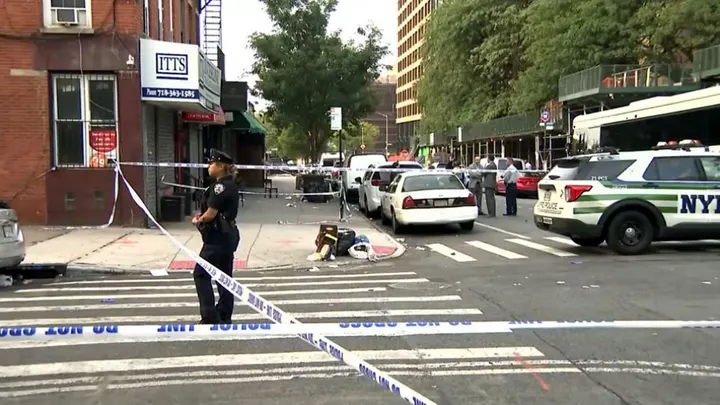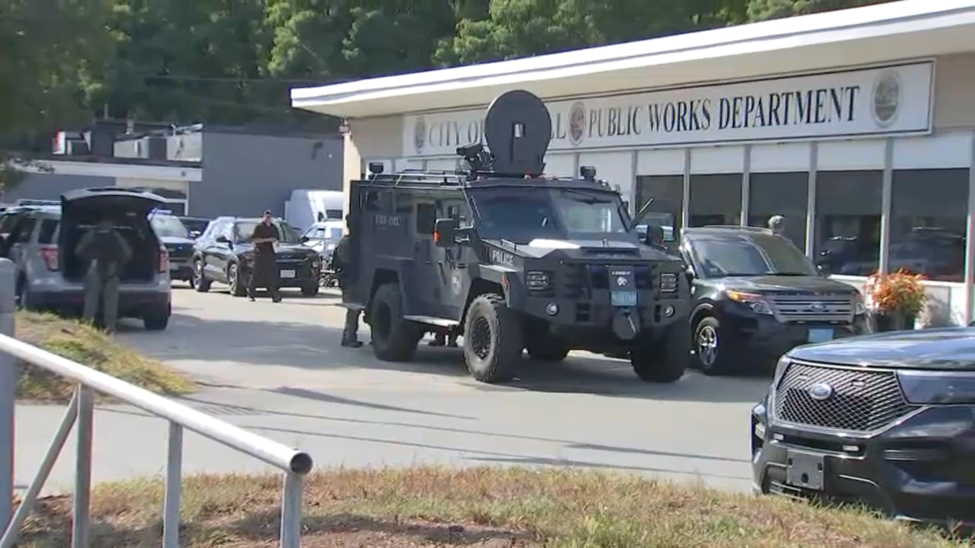Fairview, Taste of the City Lounge, Target parking-lot, Fort Stewart base… recent deadly shootings in US

Police secure the scene outside Taste of the City lounge in Crown Heights after a deadly shooting left three dead and several others injured. Photo credit: WCBS
Over the past several weeks, the U.S. has witnessed a series of deadly, high-profile shootings across different settings — nightlife venues, public spaces, workplaces, and even military bases — underscoring persistent gaps in prevention, enforcement, and policy. Key incidents covered below include: the Taste of the City Lounge shooting in Brooklyn, New York (Aug 17, 2025); the Oklahoma home shooting (Aug 16, 2025); the Target parking-lot shooting in Austin, Texas (Aug 11, 2025); the Fort Stewart base shooting in Georgia (Aug 6, 2025); and the Midtown Manhattan workplace mass shooting (Jul 28, 2025). Together, they illustrate the ongoing summer surge in gun violence.e.
1) Taste of the City Lounge shooting — Brooklyn, New York (Aug 17, 2025)
What happened: Gunfire erupted shortly after 3:30 a.m. at Taste of the City Lounge, a nightlife venue in the Crown Heights neighborhood of Brooklyn. Police said multiple shooters opened fire following an altercation inside the lounge. At least three people were killed, including a young woman in her 20s, while eight others suffered gunshot wounds of varying severity.
Response & investigation: NYPD officers responded within minutes, securing the scene and assisting victims as they were rushed to nearby hospitals. Authorities believe more than one suspect was involved and are reviewing surveillance footage while interviewing dozens of witnesses. Investigators say the incident appears to have stemmed from a dispute that escalated into deadly violence.
READ ALSO
Taste of the City Lounge shooting: Who is behind latest US attack that killed 3 and injured 8
Six dead, including police Officer, in Midtown Manhattan office shooting
Fort Stewart shooting: What happened, who is suspect Quornelius Radford?
Austin Target shooting leaves three dead, including a child — who is behind it?
What to watch: Detectives are still determining whether the shooting was gang-related, targeted, or a chaotic fallout from a fight. The case adds to New York City’s growing list of nightlife-related gun incidents, raising questions about venue security and weapons access. City officials pledged a crackdown on illegal firearms and enhanced patrols around late-night establishments.
2) Oklahoma home shooting — Fairview, Oklahoma (Aug 16, 2025)
What happened: The Oklahoma State Bureau of Investigation (OSBI) confirmed a shooting inside a home in the 800 Block of Sylvia, Fairview, around 1 a.m. Two people were killed and two others were injured.
Investigation: OSBI agents are leading the probe. No suspects have been identified so far, and the motive is still unclear.
Context: While not as public as mass shootings in nightlife venues or shopping centers, the Fairview home shooting highlights the extent to which firearm violence penetrates private spaces. Deadly disputes within homes contribute significantly to the nation’s rising gun-violence toll.
3) Target parking-lot shooting — Austin, Texas (Aug 11, 2025)
What happened: Police were called shortly after 2:15 p.m. to a Target store on Research Boulevard in north Austin after multiple shots were reported. Officers arriving within minutes found three people with gunshot wounds; two were dead at the scene and a third later died at a hospital. A fourth person was treated for non-gunfire injuries. One of the deceased was a child.
Suspect & capture: Authorities say the suspect — a man with a documented mental-health history and prior criminal record — fled the scene, stole a vehicle, crashed it, then attempted to carjack another vehicle before being subdued with a taser and arrested. Motive remains unclear.
What to watch: Investigators will probe whether weapons were legally obtained, what warning signs were missed, and whether stronger mental-health interventions could have prevented escalation.
4) Fort Stewart base shooting — Hinesville, Georgia (Aug 6, 2025)
What happened: On Aug. 6, multiple U.S. Army soldiers were shot at Fort Stewart, one of the nation’s largest Army installations. Reports confirmed at least five soldiers wounded. A suspect was quickly detained, and the base underwent lockdown procedures.
Context & response: While shootings on military bases are rare, they raise alarms about internal security, access controls, and mental-health support for service members. An internal military investigation is underway.
5) Midtown Manhattan (Park Avenue) workplace mass shooting — New York City (Jul 28, 2025)
What happened: A shooter entered an office building on Park Avenue and opened fire, killing four people and wounding several others before dying of a self-inflicted gunshot wound. Authorities believe workplace grievances fueled the attack.
Details & weapons: Reports suggest the shooter used a semi-automatic rifle. Investigators are examining how the firearm was acquired and whether warning signs were overlooked. The shooting shocked one of the busiest business corridors in Manhattan, reigniting debate over workplace security in dense urban areas.
6) Multiple summer shootings & city-level incidents
-
Chicago: Several weekends of violence have left dozens shot at parties and outdoor gatherings.
-
Holiday spikes: Data show July 4 and other summer holidays correlate with gun violence surges.
Data & seasonal trends
Gun-violence trackers confirm that 2025 has already seen hundreds of mass shootings with fatalities running into the hundreds. Researchers note that warmer months, large gatherings, and holiday seasons consistently correlate with spikes in firearm-related incidents.
Root causes & contributing factors
-
Firearm access (semi-automatic weapons, illegal sales, thefts).
-
Mental-health gaps (limited crisis intervention despite warning signs).
-
Security vulnerabilities (open venues, nightlife spaces, workplaces, and even military bases).
-
Seasonal dynamics (summer + gatherings = higher risk).
-
Criminal histories (repeat offenders exploiting gaps in oversight).
National implications
-
Public safety & community trust: Fear of routine activities (shopping, nightlife, work).
-
Policy & politics: Renewed but gridlocked debate on stricter gun laws and mental-health funding.
-
Law enforcement & trauma care: Pressure on first responders, hospitals, and investigators.
-
Economy & civil life: Business costs for security rise, tourism & nightlife face setbacks.
-
Legal debate: Constitutional battles over firearms vs. public-safety measures.
What policymakers, cities & communities are doing (or could do)
-
Short-term: patrols in hotspots, emergency-response upgrades, community outreach.
-
Medium-term: community violence intervention (CVI), crisis-response teams pairing police with mental-health experts, targeting illegal gun markets.
-
Long-term: stronger background checks, safe-storage laws, red-flag legislation, and deeper investment in mental health & social services.




